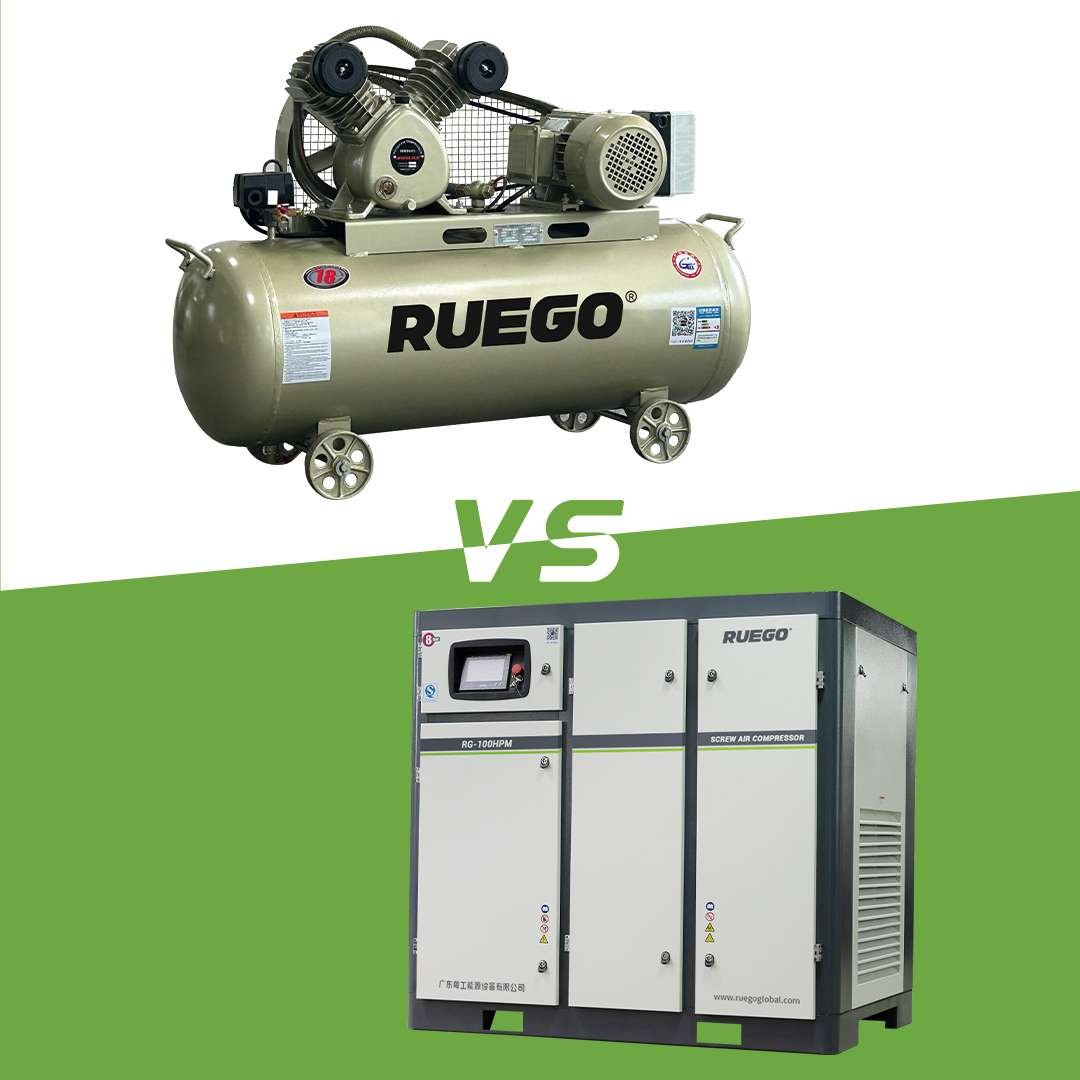
Table of Contents
Introduction
In the realm of industrial equipment, air compressors are pivotal, powering countless operations across various sectors. Among the myriad options available, screw and piston air compressors are the most prevalent. This article explores the critical differences between these two types of compressors, providing vivid scenarios to help you make an informed decision tailored to your specific needs.
Screw Air Compressors: The Powerhouse of Industrial Applications
Screw air compressors are celebrated for their efficiency and durability, making them ideal for applications that demand continuous, substantial, and stable air supply. Imagine a vast automotive manufacturing plant where assembly lines buzz without interruption — this is where screw compressors shine.
Advantages include:
- Continuous Operation: Like a relentless river, these compressors provide a steady flow of power.
- Energy Efficiency: Visualize every kilowatt of electricity being maximized for production, enhancing operational efficiency.
- Lower Noise Levels: Envision a workplace where conversations are possible despite the machinery’s hum, thanks to the compressor’s quiet operation.
- Reduced Maintenance: With fewer moving parts, screw compressors boast extended periods between maintenance checks, focusing resources on production rather than repairs.
Practical Example: A food processing plant in Hamburg, Germany, relies on a screw compressor to maintain their production line 24/7, especially during peak hours, showcasing outstanding performance and reliability.
Piston Air Compressors: The Cost-Effective Choice for Light Applications
Piston air compressors are more suitable for smaller-scale operations or when air demand is intermittent. They serve as a lifeline for applications that sporadically require additional power.
Advantages include:
- Cost-Effective: An ideal option for budget-conscious users or small-scale operations.
- Simple Mechanics: These compressors are user-friendly, making them easy to maintain and repair.
- Suitable for Intermittent Use: Perfect for environments that do not require a constant air supply.
Practical Example: A small woodworking shop in San Jose, California, uses a piston air compressor to power tools like spray guns and nailers, meeting their occasional needs without unnecessary expenditure on larger equipment.
Conclusion: Tailor Your Choice to Your Needs
When selecting an air compressor, it’s essential to consider:
- Demand Analysis: Determine whether your air requirements are continuous or intermittent.
- Cost Consideration: Assess both your budget and the long-term operational costs, including energy consumption and maintenance expenses.
- Environmental Factors: Consider the noise and space limitations where the compressor will operate.
FAQs
- Q: Is a screw air compressor truly more energy-efficient than a piston compressor?
- A: Yes, in applications requiring continuous operation, screw compressors can significantly reduce energy usage compared to piston compressors, which cycle on and off.
- Q: Is a screw air compressor truly more energy-efficient than a piston compressor?
- Q: Can I replace a screw compressor with a piston compressor if my usage decreases?
- A: Depending on the demand. If your operation transitions to lower or intermittent air use, a piston compressor might offer a more economical and practical solution.
- Q: Can I replace a screw compressor with a piston compressor if my usage decreases?
This article aims to clarify the functional and operational distinctions between screw and piston air compressors. Whether upgrading from a piston to a screw compressor or investing in your first unit, understanding these differences will help ensure you select the right compressor to optimize efficiency, minimize costs, and enhance the sustainability of your operations.

